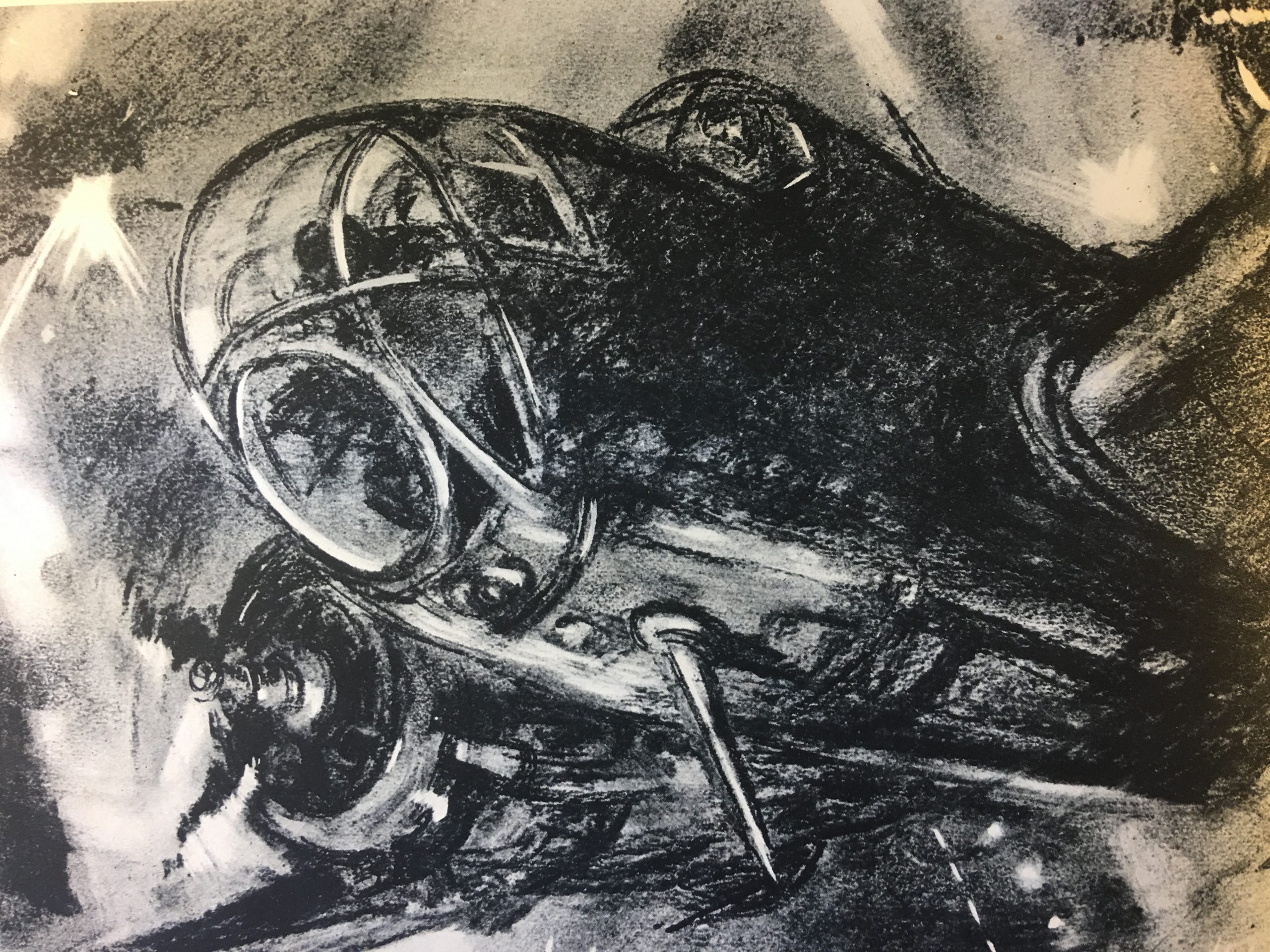On 15 November 1951 RAF North Luffenham was handed over to Royal Canadian Air Force (RCAF). There were 3 squadrons flying the Canadair F86E Sabre under the command of No 1 Fighter Wing RCAF.
The squadrons were 410 (Cougar), 439 (Tiger) and 441 (Silver Fox).
By February 1955 all three squadrons have moved forward to NATO airbases in German and France. Over this period there were casualties. Casualties not returned to relatives for burial somewhere else are resting in North Luffenham Churchyard. Of note this was not the first time the Canadians had flown from RAF North Luffenham. In WW2 408 Goose Squadron operated from North Luffenham for a period in 1942.

Over the 4 year period there were a significant number of losses in the air during training and also deaths from other causes. The North Luffenham churchyard commonwealth war graves are where some were interred. http://www.rafnorthluffenhamheritage.me.uk/?p=372

The list of crashes is as follows (it may not be complete!). Flying this first generation of jet aircraft appears to have been a very hazardous duty with a high accident rate. By records seen to date eight pilots lost their life in this period with some 19 or 20 Sabres being written off. Engine failure, fires, running out of fuel and inability to recover from spins seem to have been the main causes. It should also be remembered the ejection seats were early versions with no automatic seat seperation or parachute deployment – these functions would have to be performed by the pilot. Landing short may also have been due to the long time early jet engines took to ‘spool up’ if you needed power.
There is an anecdotal story that a house below the threshold of Runway 27 (clearly a dangerous place as Sabres landed short!) had a red light installed on the chimney due to the short landings and perhaps the occupants were rehoused and a house built? Please let me know if you can confirm this?

Crashes/incidents:
- 18 April 1952. Mid air collision over the Wash between Sabre 19177 and 19181.. Fg Off J A L Kerr and Fg Off Rayner killed.
- 12 June 1952. Sabre 19189 – written off following wheels up deadstick landing in a potato field on Thurnby Fen, near Bourne, following engine failure.
- 24 June 1952. Sabre 19156. Written off in emergency landing near Stamford following a fire in the ammunition bay.
- 1 July 1952. Sabre 19187. Flying Officer R J ‘Digger’ Conti killed in a crash. Ran out of fuel and crashed in the sea. No known grave.
- 8 July 1952. Sabre 19112 Pilot ejected over the Wash after engine failure. Crashed into sea off Hunstantion, pilot spent 2 hours in a dinghy before being rescued.
- 25 August 1952. Flying Office K Johnson killed in a crash.
- 25 August 1952. Sabre 19178. Crashed landed whilst overshooting North Luffenham.
- September 1952. An aircraft landed on the airfield with a fire in the starboard side of the fuselage. Pilot escape and the fire and rescue team extinguised the fire.
- January 1953. Leading Airman Roland Gelinas received BEM for his part in saving another airmans life when he was sucked in to a jet intake during a ground run. Gelinas acted quickly and shut down the engine.
- 3 June 1953. Sabre 19193. Fg Off J J R Bedard killed as aircraft dived into ground near Boston.
- 20 August 1953. Sabre 19158. Fuel exhausted, pilot ejected into sea off Cromer.
- 26 November 1953. Sabre 19152. Unable to recover from spin , pilot ejected near Wells
- 6 October 1953. Sabre 19167. Aircraft written off at North Luffenham. Cause unknown.
- 26 Novermber 1953. Sabre 19152. Unable to recover from spin pilot ejected near Wells.
- 2 December 1953. Sabre 19185. Landed short at North Luffenham.
- 14 December 1953. Fg Off P V Robinson died in a crash near Holme Moss TV station in the Peak District.
- 16 December 1953. Sabre 19137. Flying Officer David Gordon Tracey killed in a crash. With fuel exhausted and unable to eject, pilot attempeted a bale out but was unsuccessful and died when aircraft crashed near Long Whatton, Leicestershire.
- 21 February 1954. Sabre 19159. Fg Off Knox-Leete landed short at North Luffenham.
- 8 April 1954. Sabre 19155. Engine trouble landed short of runway at North Luffenham.
- 17 April 1954. Wing Commander Parks DFC & Bar. DC. Lost without trace over the North Sea. No known grave.
- August. Crash crew from North Luffenham dispatched a crash of an RAF Sabre at Blatherwycke. The pilot ejected succesfully and hitched a ride back to the crash site.
- The pilots in this list who are buried in North Luffenham churchyard are : Fg Off Rayner 18.4.52. Fg Off Tracey 16.12.53 and Fg Off Rbinson 14.12.54. It is not known where other casualties are buried or commemorated. In NL churchyard Fg Offs Elphick and Gillies are laid to rest – it is unknown if their death were related to air activities?
Further work to be done – all details unvalidated! Information primarily from the book: Aviation in Leicestershire and Rutland by Roy Bonser.






